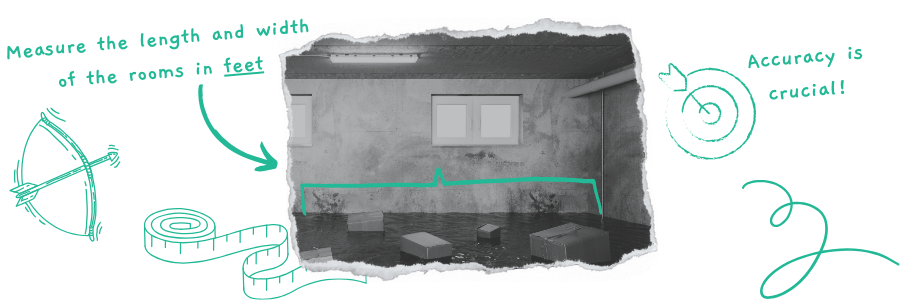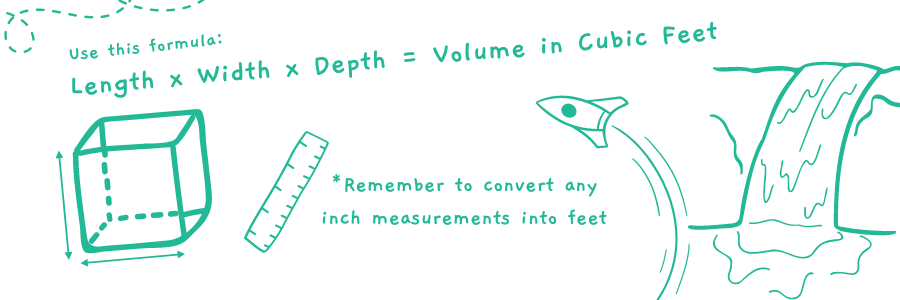Weekly Hands-on How-To powered by KnowHow
How to Calculate Standing Water Present on a Restoration Site

Water has stopped pouring into a water-damaged home. That's great news! But unfortunately the battle is only half won. With the immediate crisis at bay, the next move is to devise a plan to tackle the standing water that remains. While it might be tempting to whip out the pumps and start extracting immediately, there's a crucial step that can't be overlooked.
You’ll need to calculate the volume of standing water to effectively address the water damage and get a sense of what you’re dealing with. Get this wrong, and you’re putting the integrity of the building at risk. Not extracting water properly can place uneven pressure on the walls, causing issues that are much harder to fix later on.
Sounds straightforward, right? But here's the kicker: under pressure, even the straightforward math needed to calculate the volume of water can suddenly feel like rocket science. It's a common issue that this weekly how-to series, Powered by KnowHow, aims to address. Whether you're a seasoned veteran who could use a quick refresher or a new water technician tackling this for the first time, you're in the right place.
Here are the most efficient and accurate methods to measure troublesome standing water.
Note: This Weekly Hands-On How-To was based on this template in KnowHow’s template library.
Step 1: Safety First
Starting any job in a water-damaged area starts with prioritizing safety, especially when taking into account the hazardous mix of water and electricity. Ensuring personal safety is paramount to avoid the risk of electrical shock or worse.
Best practices:
- Always turn off the power before entering a flooded area to prevent electrocution.
- Wear waterproof rubber boots for protection against electric shock.
- Avoid using any electrical devices except for a battery-powered flashlight.
- Never handle electrical items if standing in water.
Step 2: Measure the Length and Width of the Affected Area
The first step towards water damage restoration begins with measuring the length and width of the affected area, providing the base for all of the following calculations.
Best practices:
- If in a basement, confirm the basement's extent with the homeowner.
- Measure the building's exterior to get an estimate of the affected area.
- Postpone indoor measurements in electrically hazardous conditions until it's safe.

Assessing the size of the affected area is the first critical step toward effective water management and damage control.
Step 3: Measure the Depth of the Water
Figuring out the depth of the water is the next step. The depth is a key indicator of the severity of water damage and informs the approach to water extraction.
Best practices:
- Measure the water's depth at its deepest point, using a yardstick.
- In the presence of electrical hazards, estimate depth safely.
- Take photos and create wall markings for depth indication to measure later if direct measurement isn't possible.
Step 4: Calculate Cubic Feet
This calculation transforms spatial measurements into a quantifiable volume of water to be extracted.
- Apply the formula for volume in cubic feet: length x width x depth.
- Convert any inch measurements to feet to maintain consistent units.

Step 5: Convert the Volume to Gallons
Translating the calculated volume into gallons provides a tangible measure of the water to be extracted.
- Multiply the cubic feet by 7.48 for gallons, or cubic meters by 1,000 for liters.
- Accurate conversions guide the selection of appropriate pumps and hoses.
Step 6: Determine the Weight of the Water
The final step before beginning extraction is to calculate the water's weight, ensuring the process is manageable and doesn’t endanger the structural integrity or safety of the team.
- Calculate weight in pounds by multiplying gallons by 8.345
- If using kilograms, liters convert directly; 1 liter equals 1 kilogram.
Step 7: Cautious Water Removal to Maintain Structural Integrity
Rapidly removing water from a basement can lead to structural damage due to an imbalance between the pressure inside and the saturated soil outside. Draining the water too fast could cause the collapse of the cellar walls, floors, and foundation.
Essentials:
- Begin water removal only after external floodwaters have decreased.
- Pump out water gradually, starting with one foot, to mitigate the risk of structural damage by maintaining pressure equilibrium.
Conclusion
Math under pressure is not easy. Whether you're a seasoned veteran or a newcomer, sometimes the numbers and calculations just slip your mind. This article provides the tools and knowledge to learn these crucial equations like the back of your hand.
But even with the best preparations, real-world scenarios can throw curveballs that make even the most familiar circumstances daunting. With KnowHow’s AI-powered solutions, from step-by-step guides to on-site problem resolution, you can ensure you're never left guessing. The days of pausing work to call a supervisor in these situations are behind you.
KnowHow is more than just a tool. It's a game-changer in the field of restoration, designed to empower your team not just to perform their duties but to excel at them. Visit us at Tryknowhow.com
Looking for a reprint of this article?
From high-res PDFs to custom plaques, order your copy today!






